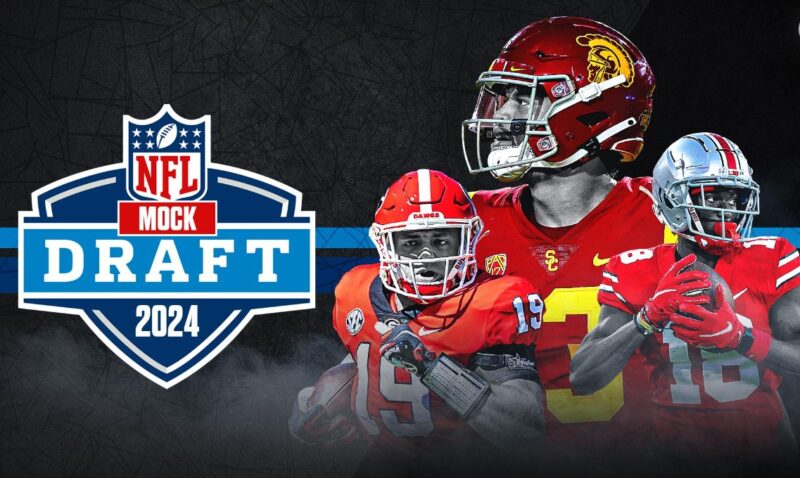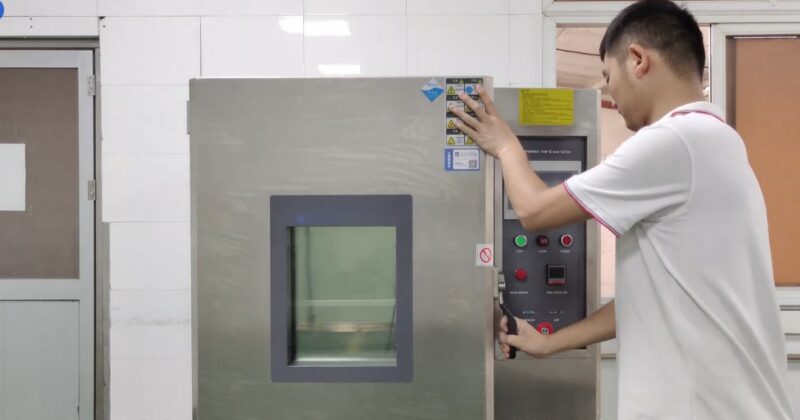Navigating the expansive universe of Linux can feel like an adventurer charting unknown territories. In this realm, LXQt and XFCE emerge as the shining stars, celebrated for their nimbleness and agility.
Ever wondered which of these lightweight champions would be your perfect ally in the digital world? Join us on a journey as we unravel the magic behind LXQt and XFCE to discover your ideal match!
LXQt

LXQt is the spiritual successor to LXDE, another lightweight desktop environment. Born from the merger of LXDE-Qt and Razor-Qt projects, LXQt is designed to be modular, lightweight, and user-friendly. It’s built using the Qt framework, which is known for its performance and sleek appearance.
Key Features:
- Modularity: Users can choose the components they want, ensuring a tailored experience.
- Qt Framework: Offers a modern look and feel, with smooth animations and transitions.
- Low Resource Usage: Ideal for older hardware or systems with limited resources.
XFCE

XFCE has been around for quite some time and has established itself as a reliable and efficient desktop environment. It’s built using the GTK+ toolkit, which is the same toolkit used by GNOME, another popular Linux DE. XFCE strikes a balance between functionality and resource efficiency.
Key Features:
- Customizability: Offers a wide range of settings and options for users to tweak.
- Panel: A highly configurable panel that can be positioned anywhere on the screen.
- Window Manager: Provides a robust window management experience with minimal overhead.
Performance and Resource Usage
Performance is often the deciding factor for many when choosing a desktop environment, especially when the hardware is a limiting factor. Lightweight DEs like LXQt and XFCE are designed to provide a responsive user experience without hogging system resources.
Let’s further explore the methods utilized by each of these DEs to accomplish this.
- LXQt: The Qt framework, upon which LXQt is built, is renowned for its efficiency and fluidity. However, this comes at a cost. The graphical elements, while sleek and modern, require a tad more computational power. This means that while LXQt offers a visually appealing interface with smooth transitions and animations, it might consume slightly more RAM and CPU compared to XFCE. For users with newer hardware, this difference is often imperceptible. But if you’re running an older machine, you might notice LXQt being a bit more demanding.
- XFCE: XFCE’s reputation as a speed demon is well-deserved. It’s optimized for performance, ensuring that even machines with limited resources can run smoothly. The DE achieves this by employing a simpler graphical design and avoiding resource-intensive animations. This makes XFCE particularly suitable for older computers or systems where conserving RAM is crucial. Its efficiency doesn’t mean it lacks in features; it’s just more conservative in its resource usage.
Customizability and User Experience
The ability to tailor a desktop environment to one’s liking is a cherished feature among Linux users. Both LXQt and XFCE excel in this domain, albeit with different philosophies.
| Feature/Aspect | LXQt | XFCE |
|---|---|---|
| Customizability Approach | Modular Design | Traditional Settings-Based |
| Description | LXQt is built around modularity, allowing users to mix and match components based on their preferences. This plug-and-play approach lets users easily swap out elements like task managers or notification systems. | XFCE offers a vast array of settings that users can adjust. This provides granular control over every aspect of the desktop environment, from window behaviors to panel appearances. |
| Design Aesthetics | The Qt framework gives LXQt a modern and cohesive appearance, regardless of the components chosen. | While XFCE’s GTK+ toolkit ensures a consistent and stable appearance, it might come off as more traditional or old-fashioned, especially when compared to LXQt. However, this classic look is seen by many as a defining charm of XFCE. |
| Ideal For | Users who want a tailored experience, be it minimalist with only essential components or a feature-rich environment. | Users who appreciate a more classic look and feel and want detailed control over their desktop environment’s settings and behaviors. |
Application Ecosystem
A desktop environment is more than just a graphical interface; it’s a complete ecosystem of applications designed to provide a cohesive user experience. Both LXQt and XFCE offer a range of applications tailored to their environments, ensuring that users don’t have to look far for tools that integrate seamlessly.
- LXQt Applications:
- PCManFM-Qt: This file manager is a Qt port of the popular PCManFM. It’s lightweight, feature-rich, and offers a user-friendly interface. With tabbed browsing, customizable views, and advanced search capabilities, it’s designed to handle all your file management needs efficiently.
- QTerminal: A terminal emulator is essential for any Linux user, and QTerminal delivers a modern and lightweight solution. It supports multiple tabs, customizable themes, and a range of keyboard shortcuts, making it both functional and pleasant to use.
- LXQt Archiver: Managing compressed files is a breeze with LXQt Archiver. It supports a wide range of formats and offers an intuitive interface, ensuring that archiving and extracting files is a hassle-free experience.
- XFCE Applications:
- Thunar: Thunar is XFCE’s answer to file management. It’s fast, easy to use, and highly customizable. With features like bulk renaming, custom actions, and a responsive design, it’s no wonder Thunar is a favorite among XFCE users.
- XFCE Terminal: This terminal emulator is both powerful and lightweight. It offers a range of features, including tabs, transparency, and a dropdown mode, ensuring that users have all the tools they need at their fingertips.
- Ristretto: In a world filled with images, having a reliable image viewer is crucial. Ristretto is quick, efficient, and supports a wide range of image formats. With features like slideshow mode and thumbnail previews, it’s designed to make viewing and managing images a joy.
Community and Support

The strength of an open-source project often lies in its community. A vibrant and active community ensures that the software remains up-to-date, bugs are addressed promptly, and new users can find the support they need.
- LXQt: As a relatively new entrant in the world of Linux desktop environments, LXQt is still in the process of building its community. However, the growth has been promising. The community is enthusiastic, welcoming, and eager to push the boundaries of what LXQt can offer. Active development means that users can look forward to regular updates, new features, and continuous improvements. Forums, online groups, and documentation are steadily expanding, providing resources for both newcomers and seasoned users.
- XFCE: Decades of existence have allowed XFCE to cultivate a vast and dedicated community. This large user base ensures a wealth of knowledge and resources. Whether you’re facing a minor glitch or looking for ways to customize your environment, chances are someone in the XFCE community has the answer. The long history also means that XFCE has seen rigorous testing and refinements over the years, resulting in a stable and reliable desktop environment. Regular meetups, online forums, and extensive documentation make it easy for users to find the support and information they need.
In essence, while LXQt’s community is burgeoning with potential and enthusiasm, XFCE’s community offers the wisdom and stability that come with time. Both are invaluable in their own right, ensuring that users of either desktop environment are well-supported.
FAQs
Can I install both LXQt and XFCE on the same system and switch between them?
Yes, you can install multiple desktop environments on the same system. During the login process, you can select which desktop environment you want to use for that session. However, ensure that the installation process doesn’t overwrite or conflict with existing settings.
Are there any specific system requirements?
Both LXQt and XFCE are designed to be lightweight and can run on older hardware. However, for the best experience, it’s recommended to have at least 512MB of RAM for XFCE and 1GB for LXQt. The actual requirements might vary based on the distribution and additional software you install.
How do these desktop environments handle high-resolution displays or multiple monitor setups?
Both LXQt and XFCE have made strides in supporting high-resolution displays and multi-monitor setups. LXQt, with its modern Qt framework, generally handles high DPI displays quite well. XFCE, in its recent versions, has also improved its high DPI support. For multi-monitor setups, both environments provide tools to manage and configure multiple displays to your liking.
Are they compatible with all Linux distributions?
While not all, most major Linux distributions support both LXQt and XFCE. Popular distributions like Ubuntu, Fedora, and Debian have versions or flavors specifically tailored for these desktop environments. For others, you can typically install LXQt or XFCE from the distribution’s software repository.
How often are these environments updated with new features or bug fixes?
The update frequency can vary. LXQt, being relatively newer, might see more frequent updates as it’s still in active development and refinement. XFCE, on the other hand, is known for its stability and might have longer intervals between major releases. However, bug fixes and minor updates are regularly rolled out for both.
Can I use GNOME or KDE applications within LXQt or XFCE?
Yes, you can. Linux desktop environments are quite flexible. While LXQt and XFCE come with their own suite of applications, there’s nothing stopping you from installing and running applications designed for GNOME, KDE, or any other desktop environment. Just be aware that doing so might pull in additional libraries and dependencies, slightly increasing the system’s resource usage.
Final Words
The choice between LXQt and XFCE boils down to personal preference. If you’re looking for a modern appearance with a touch of elegance and don’t mind slightly higher resource usage, LXQt might be the way to go. On the other hand, if you prioritize performance above all and prefer a tried-and-tested environment, XFCE won’t disappoint.
In the end, LXQt and XFCE both provide an exceptional Linux desktop experience. The key is to discover the one that suits your requirements and visual preferences. Therefore, we recommend trying out both options to determine which one appeals to you the most! Additionally, if you are considering installing Linux on your laptop, take a look at our list of the top 10 Linux Laptop computers.
Related Posts:
- 10 Best Linux Laptop 2024 - Powerful & Cheap Laptops
- Waterproof vs Non-Waterproof Hiking Boots- Which One…
- HDMI vs. DisplayPort vs. DVI vs. VGA vs. USB-C –…
- What Is Anti-Aliasing And Which Type Should You Use?…
- Top 7 Best Gaming Desktop 2024 - Discover the…
- Alienware X51 AX51R3-10BLK Desktop - Excellent…







